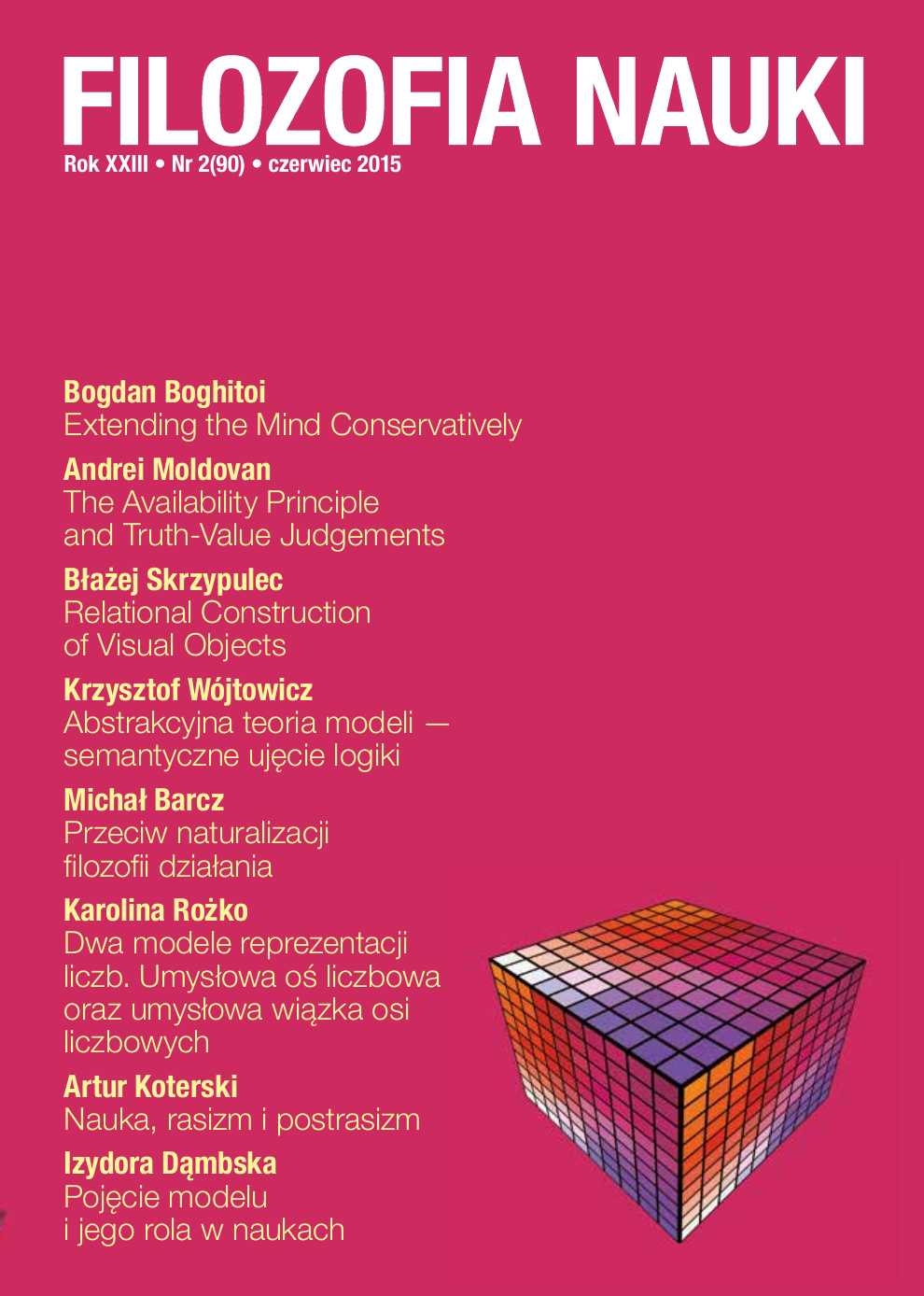Dwa modele reprezentacji liczb. Umysłowa oś liczbowa oraz umysłowa wiązka osi liczbowych
Słowa kluczowe:
cognitive arithmetic, number line, number clusterAbstrakt
The main aim of this article is to present two models that explain how mathematical notions are created in mind - "mental number line" and "mental number cluster". The first one was proposed by Stanislas Dehaene. According to this model, the basis of the simplest mathematical notions is the mental one-axis line, which contains discrete values of natural numbers. The second model was proposed by Wojciech Krysztofiak. In this model the basic mental representation takes the form of a cluster of numerical axes. Both models are presented from a different point of view: the "mental number line" model is presented from the neuroscientific perspective, whereas the "mental number cluster" - from the formal-logic perspective. However, the abstract nature of the former model and the experimental predictions of the latter has allowed us to compare them.Pobrania
Opublikowane
2015-06-01
Jak cytować
Rożko, K. (2015). Dwa modele reprezentacji liczb. Umysłowa oś liczbowa oraz umysłowa wiązka osi liczbowych. Filozofia Nauki, 23(2), 107–122. Pobrano z https://www.fn.uw.edu.pl/index.php/fn/article/view/789
Numer
Dział
Artykuły















 Filozofia Nauki | ISSN 1230-6894 | e-ISSN 2657-5868
Filozofia Nauki | ISSN 1230-6894 | e-ISSN 2657-5868